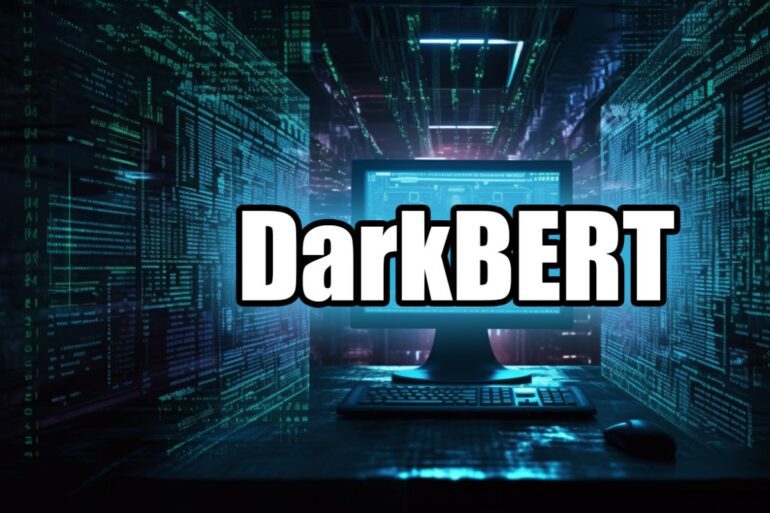TL;DR:
- DarkBERT is an advanced LLM trained exclusively on dark web data, aiming to combat cyber threats.
- It is based on the RoBERTa architecture and trained on millions of dark web pages.
- DarkBERT excels in identifying potential cyber dangers and supports threat researchers, law enforcement, and cybersecurity experts.
- It outperforms existing language models in critical cybersecurity use cases.
- DarkBERT enables automated monitoring of dark web forums for potentially hazardous topics.
- It aids in locating websites storing sensitive information and detecting threat-related keywords.
- DarkBERT’s capabilities provide a valuable weapon in the battle against cyber threats.
Main AI News:
In a groundbreaking initiative, a consortium of South Korean scholars has developed DarkBERT, an LLM (Language and Linguistics Model) exclusively trained on data from the dark web. The primary objective behind this endeavor was to create an advanced artificial intelligence tool capable of surpassing existing language models and assisting threat researchers, law enforcement agencies, and cybersecurity experts in their relentless fight against cyber threats.
So, what exactly is DarkBERT? DarkBERT is an encoder model based on the RoBERTa architecture, leveraging the power of transformers. This sophisticated language model was meticulously trained on an extensive corpus of dark web content, including data extracted from hacker forums, scamming websites, and other illicit sources on the criminal underbelly of the internet. For the uninitiated, the term “dark web” refers to an obscure and hidden corner of the internet that is inaccessible using conventional web browsers. This enigmatic realm is renowned for hosting anonymous websites and marketplaces notorious for engaging in criminal activities such as the trade of stolen data, narcotics, and even firearms.
To obtain the raw data required for training DarkBERT, the researchers ventured into the depths of the dark web, employing the Tor network for access. They conducted an exhaustive process of data curation, employing techniques such as deduplication, category balancing, and extensive pre-processing to construct a refined dark web database. This meticulously curated dataset was then fed into the RoBERTa model over a span of approximately 15 days, ultimately giving birth to the powerful DarkBERT.
Unlocking DarkBERT’s Potential in the Realm of Cybersecurity
DarkBERT possesses an exceptional understanding of the vernacular employed by cybercriminals and exhibits unparalleled proficiency in identifying potential threats. Its capabilities extend to conducting in-depth research within the dark web ecosystem, effectively unearthing and highlighting cybersecurity risks such as data breaches and ransomware attacks. DarkBERT’s emergence represents a significant breakthrough in the ongoing battle against cyber threats, potentially equipping security experts with a formidable weapon.
To substantiate DarkBERT’s superiority, researchers conducted a comparative analysis with two well-established NLP (Natural Language Processing) models, BERT and RoBERTa, across three critical cybersecurity-related use cases. The findings, published on arxiv.org, shed light on DarkBERT’s unmatched performance and its potential impact on cybersecurity.
1. Probing Dark Web Forums for Potential Hazards: Monitoring dark web forums, known for facilitating the exchange of illicit information, plays a vital role in detecting potentially harmful content. However, the manual examination of these forums can be an arduous and time-consuming task. The automation of this process through DarkBERT’s capabilities proves invaluable for security specialists.
2. Identifying Websites Hosting Sensitive Information: Cybercriminals and ransomware groups often exploit the dark web to establish leak sites that expose confidential data stolen from companies unwilling to meet ransom demands. Some fraudsters even directly post leaked sensitive information on the dark web, including passwords and banking details, with the intent to sell them. DarkBERT’s adeptness at identifying such websites provides an instrumental tool for mitigating the risks associated with data breaches.
3. Unearthing Threat-Related Keywords on the Dark Web: By utilizing the fill-mask function, an attribute derived from the BERT family of language models, DarkBERT exhibits a remarkable ability to accurately identify phrases associated with criminal activities, such as drug transactions, within the dark web ecosystem. While alternative models often generate generic terms and unrelated keywords, DarkBERT presents drug-specific terms when tasked with uncovering hidden phrases on drug sales websites. Such a capability greatly aids in identifying and addressing emerging cyber risks.
Harnessing AI for Threat Detection and Prevention
DarkBERT, with its pre-training on dark web data, outperforms existing language models in multiple cybersecurity applications, firmly establishing itself as an indispensable tool for advancing dark web research. The AI model trained on the dark web holds vast potential for application in various cybersecurity endeavors, including the identification of websites involved in the illicit trade of personal data, continuous monitoring of dark web forums for unlawful information exchange, and the detection of keywords indicative of cyber threats. It is essential to note, however, that DarkBERT, like other LLMs, is a work in progress, with scope for enhanced performance through continual training and fine-tuning.
Conclusion:
The development of DarkBERT AI represents a significant milestone in cybersecurity. By leveraging the power of transformers and training solely on dark web data, DarkBERT demonstrates unparalleled proficiency in understanding cybercriminals’ language and identifying potential threats. Its exceptional performance in critical cybersecurity uses cases positions it as a game-changer in the industry. DarkBERT’s ability to automate monitoring, locate sensitive websites, and detect threat-related keywords on the dark web provides invaluable support to security specialists and law enforcement agencies. This breakthrough technology is set to revolutionize the market, enhancing threat detection and prevention measures and paving the way for future advancements in combating cybercrime.

